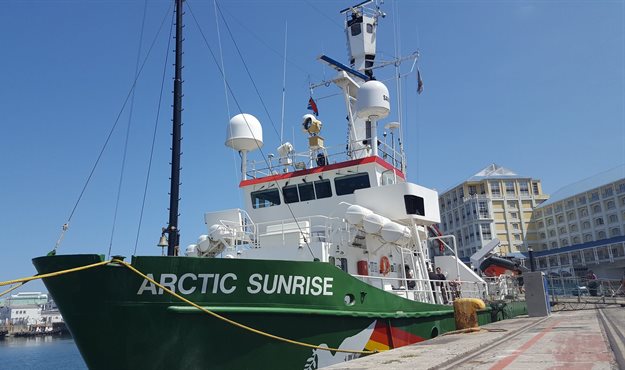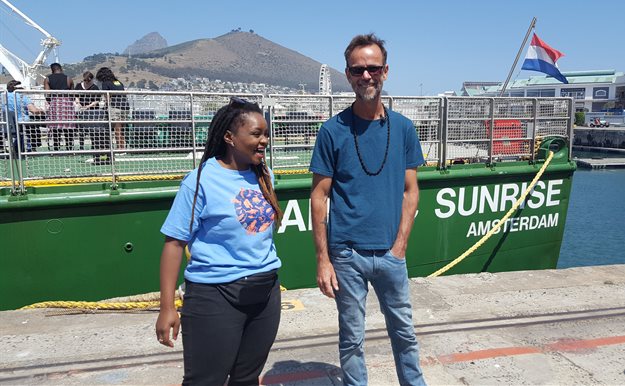Why we need a global treaty to protect areas like Seamount Vema

The ocean is shallower around sea mounts and therefore allows for thriving fish nurseries, explained Captain Mike Fincken of the Arctic Sunrise during a media address.
"This area is of particular importance because it was one of the first documented sea mounts that was overexploited and completely depleted," he said.
The 17-strong Greenpeace crew will assess current conditions at Seamount Vema and plan to pull out 70m-deep lobster traps that have been abandoned in this area by fisheries for decades and are now senselessly catching lobster and fish.
"One of the things we also want to bring attention to is how important sea mounts are and the importance of creating marine reserves around these areas," said Fincken. "We need to create marine reserves in 30% of the ocean, not just indiscriminately anywhere, but in certain areas, and especially sea mounts."

Conservation of the high seas
The Global Ocean Treaty, proposed by the United Nations, is a legally binding agreement for the conservation of biodiversity and protection of the world’s high seas - the two-thirds of the ocean which falls beyond the national jurisdiction of any country. Currently, just 1% of the global high seas are protected. Final talks on the Global Ocean Treaty are set for early next year.
While the high seas have in the past been a safe-haven for ocean biodiversity, fast-developing technology has made these remote areas, including the poles, accessible to high-impact commercial and industrial activities that are now putting immense pressure on these previously untouched areas, disrupting global food security and driving biodiversity loss by damaging ocean ecosystems, while contributing to other environmental stress factors such as climate change, pollution and ocean acidification.
In the meantime, the Arctic Sunrise will continue on its investigative mission as it heads towards Antarctica. This weekend though, the ship is open to the public from 8am to 3pm, and will serve as a platform for the public to engage more with the ship's ocean campaign, as well as the local work of Greenpeace Africa, said Bukelwa Nzimande, climate and energy campaigner for Greenpeace Africa.











